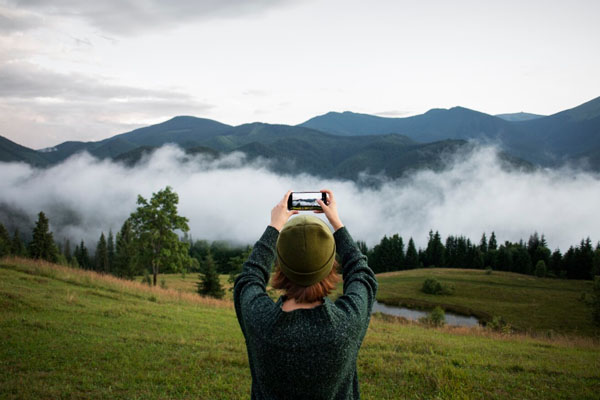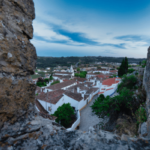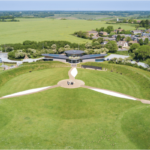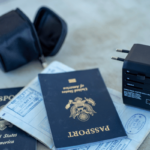Embark on a visual journey with our travel photography tips, capturing world’s stunning views learn to capture breathtaking landscapes and vibrant cultures, turning your travel photos into lasting memories. Master the art of photography on your adventures.
Essential Tips for Aspiring Travel Photographers
Travel photography is more than just taking pictures; it’s about storytelling. Begin by understanding your camera’s settings. Experiment with different angles and perspectives to bring uniqueness to your shots. Early morning or late afternoon offers the best natural light, enhancing the beauty of landscapes. Remember, patience is key. Sometimes, waiting for the perfect moment can transform a good photo into a great one.
Capturing local cultures requires respect and sensitivity. Engage with locals and understand their customs. This not only enriches your experience but also opens doors to more authentic and meaningful photographs. Use natural light to your advantage, creating depth and emotion in your images. Additionally, pay attention to composition. Rule of thirds can be a powerful tool in framing your shots, adding balance and interest to your travel photos.
Finally, don’t forget to enjoy the experience beyond the lens. While it’s important to capture memories, being present in the moment is equally vital. Use photography as a means to connect with your surroundings, not just document them. Travel photography tips like these can elevate your skills, but your passion and perspective are what truly make your photos stand out. Embrace the journey of capturing the world’s beauty.
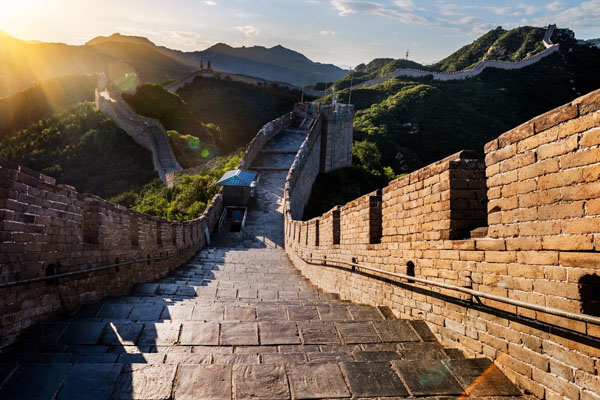
Capturing World’s Stunning Views: the World’s Wonders
Imagine photographing the world’s modern wonders. Start with the majestic Great Wall of China. Capture its vastness early in the morning to avoid crowds and get soft, diffused light. Use a wide-angle lens to encompass its sprawling length. Play with perspectives; shoot from low angles to emphasize its grandeur. Remember, the Great Wall isn’t just a structure; it’s a symbol of history. Let your photos tell that story.
Next, the stunning Petra in Jordan awaits. This ancient city carved from rose-red stone offers a unique photographic challenge. The best light for photos is mid-morning or late afternoon when the sun illuminates the facades. Capture the contrast between the rugged landscape and the architectural finesse. Include people in your shots for scale. Petra is not just a site; it’s a testament to human ingenuity in harmony with nature.
The Christ the Redeemer statue in Brazil offers a blend of natural and man-made beauty. Photograph it during sunrise or sunset for a dramatic backdrop. Use a telephoto lens to capture details against the sprawling cityscape. Including surrounding landscapes can provide context to this iconic monument. Remember, travel photography is about capturing the essence of a place, blending landscapes and cultures into a cohesive visual narrative.
Exploring Machu Picchu’s Mystical Beauty in Photos
Machu Picchu, a symbol of the Incan Empire, is a photographer’s dream. To capture its essence, arrive early to beat the crowds and catch the soft morning light. Use a wide lens to embrace its vastness. Focus on the interplay between the ancient ruins and the lush, surrounding mountains. This contrast tells a story of a civilization in harmony with nature, a central theme in your travel photography.
Consider the changing weather when photographing Machu Picchu. Mist and clouds can add a mystical element to your shots. Play with these conditions to create moody, evocative images. Close-up shots of the intricate stonework can also be compelling. These details offer a glimpse into the Incan craftsmanship. Remember, each photo is an opportunity to convey the awe and wonder this ancient wonder inspires in every traveler.
Lastly, don’t overlook the human element. Capturing local guides or fellow travelers admiring the site can add depth to your photos. It shows the ongoing connection between past and present. Always be ready to capture unexpected moments. Sometimes, a fleeting expression or a bird flying over the ruins can turn a good photo into an unforgettable one. In travel photography, it’s these spontaneous moments that often resonate the most.
Taj Mahal: Capturing Love’s Eternal Monument
The Taj Mahal, a marvel of Mughal architecture, is more than a monument; it’s a symbol of eternal love. Photographing it requires patience and timing. Visit during sunrise for a crowd-free experience and soft lighting. Use reflections in the water channels for symmetrical compositions. A telephoto lens can capture intricate details of the marble inlay work. Remember, the Taj Mahal changes color with the light, so capture its various moods.
Experiment with different angles and perspectives. A common shot is the frontal view, but try capturing it from its sides or the Yamuna River behind it for unique compositions. Include the surrounding gardens and fountains to add context. These elements highlight the Taj Mahal’s grandeur and its harmonious integration with nature. In travel photography, exploring different viewpoints can lead to more dynamic and interesting photos.
Lastly, consider the human element in your Taj Mahal photos. Capturing visitors in the frame can provide a sense of scale and relatability. Be mindful of the cultural and religious significance of the site. Respectful and unobtrusive photography ensures a positive experience for everyone. The Taj Mahal isn’t just a structure; it’s a story of love, loss, and artistry. Let your photos reflect these themes.
Colosseum: Reliving History Through Photographic Lenses
The Colosseum in Rome, an emblem of ancient gladiatorial battles, beckons photographers. To capture its grandeur, shoot during golden hours for a dramatic effect. A wide-angle lens can encompass its vastness, while a zoom lens can detail the intricate architecture. Consider the play of light and shadow in the arches, adding depth to your images. The Colosseum isn’t just an ancient structure; it’s a narrative of Rome’s historical prowess.
Experiment with viewpoints. Capture it from a distance to include the surrounding cityscape, or focus closely on the weathered stones, telling a story of time. Including people in your shots adds a contemporary touch to this historical monument. It’s a reminder of how the past and present coexist in Rome. In travel photography, juxtaposing the old with the new can provide a compelling narrative, enriching the viewer’s experience.
Don’t forget the interior. The labyrinth of underground passages where gladiators once waited is as captivating as the exterior. Low light conditions here can be challenging, so adjust your camera settings accordingly. The Colosseum’s interior offers a different perspective, one of anticipation and awe. Capturing this iconic landmark requires patience and creativity, but the result is a timeless tribute to Rome’s enduring legacy in world history.
Chichen Itza: Capturing the Mayan World Wonder
Chichen Itza, a testament to Mayan civilization, offers unique photographic opportunities. The best time to photograph the iconic El Castillo pyramid is early morning or late afternoon when the light casts dramatic shadows, highlighting its geometric precision. Use a wide-angle lens to capture its grandeur against the Yucatan sky. Remember, Chichen Itza is not just an archaeological site; it’s a window into an ancient, sophisticated culture.
Explore different angles and compositions. The play of light and shadow on the steps creates a visual rhythm, leading the viewer’s eye. Include the surrounding temples and the Great Ball Court to provide context to the site’s historical significance. Capturing the interaction between visitors and the site can add a dynamic element. In travel photography, showing how people engage with these wonders adds a layer of relatability and depth to your images.
Don’t overlook the smaller details. The intricate carvings and stone work of Chichen Itza tell their own stories. Close-up shots can reveal these artistic nuances, offering a glimpse into the Mayan world. Be mindful of the cultural significance and respect the site’s preservation rules. Chichen Itza is a place where history and art converge, and your photography can capture this convergence, bringing the past vividly to life.
Christ the Redeemer: Iconic Symbol in Photos
Christ the Redeemer, standing atop Rio de Janeiro, offers breathtaking photographic vistas. Capture this iconic statue during sunrise or sunset for a dramatic sky backdrop. A wide-angle lens can encompass the statue with the sprawling city below. Consider the interplay of light and shadow on the statue’s contours, adding depth and emotion to your images. This monument isn’t just a landmark; it’s a fusion of art, religion, and Brazilian culture.
Experiment with different perspectives. Aerial shots, if possible, provide a unique view of the statue against the urban landscape. Ground-level shots, with the statue towering above, evoke a sense of awe. Including people in your photos can add scale and a human element. Remember, in travel photography, capturing the essence of a place often involves blending the monumental with the personal, the grandiose with the intimate.
Don’t forget the surrounding natural beauty. The lush Tijuca Forest and the panoramic views of the city and bay add context to the statue’s location. Capturing this juxtaposition highlights the harmony between nature and human creation. Christ the Redeemer is more than a photo opportunity; it’s a chance to capture a moment where art, nature, and spirituality converge, offering a unique narrative through your lens.
Ancient City’s Photographic Journey Unveiled
Petra, the rose-red city of the Nabateans, is a photographic marvel. Capture its beauty in the early morning or late afternoon when the sunlight enhances its natural colors. A wide-angle lens is ideal for encompassing the vastness of the site, including the Siq leading to the Treasury. Petra is not just an archaeological site; it’s a testament to human ingenuity, blending seamlessly with the rugged landscape.
Experiment with perspectives to capture Petra’s essence. The contrast between the towering rock formations and the carved facades offers a dramatic visual narrative. Close-up shots of intricate carvings reveal the craftsmanship of the Nabateans. Including people in your shots adds scale and brings the city to life. Remember, in travel photography, capturing the interaction between the ancient and the present adds depth and a sense of continuity to your images.
Don’t overlook the lesser-known corners of Petra. The Monastery, with its massive façade, and the Royal Tombs offer unique photographic opportunities. The changing light throughout the day creates different moods and atmospheres, offering a variety of shooting conditions. Petra’s allure lies in its mystery and grandeur, and your photography can capture this essence, inviting viewers to explore the depths of this ancient wonder.
Essential Gear for Mastering Travel Photography
In travel photography, the right equipment is crucial. A versatile camera that performs well in various lighting conditions is a must. Consider a DSLR or a mirrorless camera for their quality and flexibility. Lenses are equally important; a wide-angle lens is ideal for landscapes, while a zoom lens is perfect for capturing details from a distance. Remember, the best camera is the one you have with you, so prioritize portability and comfort.
Don’t underestimate the power of accessories. A sturdy tripod can be invaluable, especially for long exposures and low-light conditions. Filters, like polarizers, can enhance colors and reduce reflections. Spare batteries and memory cards are essential; running out of power or storage can mean missing a once-in-a-lifetime shot. Additionally, a good camera bag that protects your gear and is easy to carry will make your photography journey more enjoyable and efficient.
Lastly, consider the non-technical aspects. A keen eye for composition, understanding of light, and a sense of curiosity are as important as the gear. Practice makes perfect; the more you shoot, the better you’ll get. Be patient, observant, and ready to capture the spontaneous moments that often make the best travel photos. Remember, travel photography is not just about the gear but also about the story you want to tell.
Best Apps and Software for Photo Editing
In today’s digital age, photo editing plays a crucial role in travel photography. Adobe Lightroom is a popular choice for its comprehensive tools and user-friendly interface. It allows for detailed adjustments and batch editing, making it ideal for enhancing travel photos. Lightroom’s presets can also speed up the editing process, ensuring a consistent look across your images. Remember, editing is about refining your photos, not completely altering them.
For those seeking more advanced editing, Adobe Photoshop offers unparalleled capabilities. From complex layering to detailed retouching, Photoshop is the go-to for photographers aiming to create artistic compositions. However, it requires more skill and time. Mobile apps like Snapseed and VSCO are great for on-the-go editing, offering a range of filters and tools. These apps are perfect for quick edits, ensuring your travel photos are share-ready at any moment.
Don’t forget about organizing and backing up your photos. Software like Adobe Bridge or Google Photos can help manage your library efficiently. Regular backups are essential to protect your precious travel memories. Ultimately, the choice of editing software should align with your needs and skill level. Whether it’s subtle adjustments or creative transformations, the right tools can elevate your travel photography, bringing your vision to life.
Conclusion: Capturing World’s Stunning Views
In conclusion, travel photography is an art that combines technical skill, creative vision, and a deep appreciation for the world around us. It’s about capturing moments that tell a story, convey an emotion, or reveal the beauty of a place. Whether it’s the grandeur of ancient wonders or the subtle nuances of daily life, each photo offers a unique perspective, a frozen slice of time for us to cherish.
The journey of a travel photographer is one of constant learning and exploration. It involves not just mastering the camera, but also understanding different cultures, adapting to various environments, and connecting with people. It’s about finding beauty in the mundane and significance in the grandiose. Every trip is an opportunity to grow, to see the world through a new lens, and to share these experiences with others.
Ultimately, travel photography is a powerful medium that bridges gaps and fosters understanding. It’s a way to document our world’s diverse landscapes, cultures, and histories. As photographers, we have the privilege and responsibility to capture these moments with integrity and respect. Let’s embrace this journey with passion and curiosity, continually striving to portray the world in its true, vibrant colors.
I. Frenquently Asked Questions About Italy

Ryan Taylor, a seasoned traveler with over a decade of experience exploring Europe’s nooks and crannies, offers a wealth of knowledge and unique insights into the continent’s diverse cultures and landscapes. His passion for travel began in his early twenties, and since then, Ryan has journeyed through numerous European countries, collecting stories, tips, and a deep understanding of each destination’s unique charm. His blog entries are not just guides but narratives enriched with personal experiences, making every recommendation and piece of advice relatable and practical for fellow travel enthusiasts. With a keen eye for hidden gems and a love for sharing his adventures, Ryan’s writings are a treasure trove for anyone seeking to discover the beauty and richness of Europe.

